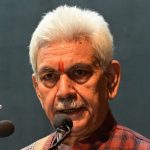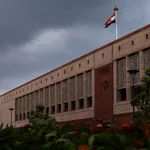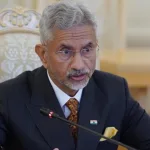As we step into a fresh chapter with the onset of a new year, the air is filled with an invigorating sense of optimism and the spirit of renewal. This period beckons us to embrace the rich tapestry of diverse cultural traditions that add vibrancy to our global community. Amidst the myriad festivities that mark this celebratory time, it becomes increasingly imperative to underscore the significance of nurturing unity and inclusivity within our society.
One particularly noteworthy event poised on the horizon is the consecration of the Ram Mandir in Ayodhya, scheduled for today i.e. January 22. This momentous occasion transcends mere religious importance; it stands as a profound symbol of unity, justice, and tolerance.
The impending consecration holds the potential not only to deepen the roots of religious faith but also to serve as a beacon of shared cultural heritage that unites people across diverse backgrounds.
This historic event is poised to contribute to the collective narrative of our society, fostering a sense of togetherness that transcends individual differences. As we anticipate the consecration, let it serve as a reminder of our shared humanity, promoting an atmosphere where inclusivity and understanding can flourish.
In embracing such milestones, we pave the way for a harmonious coexistence, encapsulating the essence of a united and culturally enriched community.
The establishment of the Ram Mandir, poised to be a cornerstone in Ayodhya, extends beyond its religious origins, assuming a profound significance as a symbol of unity with broader implications. The construction of this temple presents a unique opportunity for society to transcend divisive narratives, eschew hatred, and move beyond the shadows of communal politics. It stands as a resounding call to embrace the rich tapestry of diversity, fostering a commitment to inclusive celebrations within a society that cherishes its shared historical heritage.
In envisioning the Ram Mandir, we find not merely the construction of a religious edifice but the laying of foundations for a more harmonious and tolerant community. It symbolizes a departure from discord and animosity, urging citizens to embrace the beauty of coexistence amidst differences. Beyond its architectural and religious significance, the temple becomes a rallying point for a society that aspires to rise above prejudice, encouraging an environment where every individual’s rights are respected, and fairness prevails.
As the temple takes shape, it serves as a testament to the collective commitment of a society that values unity and harmony. In weaving the threads of shared history, the Ram Mandir emerges not only as a physical structure but as a living testament to the enduring spirit of communal amity, encouraging a shared journey towards a future marked by understanding, respect, and a celebration of diversity.
The contemporary challenge of navigating social media driven by political agendas infiltrates our private spaces, contributing to global restlessness. In this era of information overload, distinguishing meaningful signals becomes akin to discerning multiple discordant tunes played simultaneously by different musicians. The Ram Mandir, in this context, becomes a unifying force, offering a sense of direction amidst the chaos.
A pivotal facet of the imminent event lies in the active involvement of Muslim individuals in the forthcoming celebrations surrounding the consecration of the Ram Mandir. The decision of these individuals to partake in the festivities while steadfastly adhering to their faith stands as a powerful testament to the profound inclusivity embodied by the Ram Mandir. Their participation becomes a living embodiment of the idea that unity can transcend religious boundaries, fostering a spirit of togetherness that surpasses conventional divisions.
In choosing to celebrate alongside their fellow citizens without compromising the tenets of their faith, these Muslim participants exemplify a broader commitment to harmony and coexistence. This collective involvement underscores a shared recognition that the joyous occasion of the temple’s consecration is not confined to the exclusive domain of any particular community; rather, it serves as a unifying force that transcends religious affiliations. The diverse participation becomes a living narrative, echoing a desire for communal unity that is grounded in the acceptance and celebration of differences.
The inclusive participation of Muslim individuals in the festivities surrounding the Ram Mandir not only enriches the cultural tapestry of the event but also reinforces the notion that moments of collective celebration can serve as bridges between different faiths. It symbolizes a shared commitment to building a society where diversity is not merely acknowledged but actively embraced, fostering an atmosphere where unity flourishes amidst the vibrant mosaic of religious and cultural identities.
The consecration of the Ram Mandir is a historic moment that holds the potential to heal Hindu-Muslim relations permanently. Contributions from individuals, regardless of their religious affiliations, underscore the importance of protecting faith, life, and constitutional rights, fostering a sense of national reconciliation.
It is essential to acknowledge that Indian Muslims should not bear the burden of historical mistakes. They are integral citizens of the nation, deserving equal rights and respect. Scholar Abdul SamadKhwaja emphasizes the need for the Ram Mandir to inspire forgiveness and permanent conflict resolution, aligning with the legacy of honouring commitments—a key element of Shri Ram’s legacy and resonating with the principles of leaders like Hazrat Abu Bakr (RA), and Hazrat Omar (RA).
The celebration surrounding the construction of the Ram Mandir stands as a testament to the rich tapestry of religious freedom that characterizes India. It is crucial to emphasize that this joyous occasion does not pose a threat to the religious freedom of Indian Muslims. Instead, it serves as a reaffirmation of India’s inclusive culture, where Hindus and Muslims have historically coexisted harmoniously. Preserving this ethos is not only a responsibility but also an investment in a future where diversity is not just tolerated but celebrated.
India’s unique fabric of coexistence, where people of various faiths share common spaces and experiences, must be actively safeguarded for the benefit of generations to come. The celebration of the Ram Mandir construction is an opportunity to reinforce the bonds that unite the diverse communities within the nation. It is a call to uphold the principles of unity, justice, and tolerance that are integral to India’s cultural heritage.
In essence, the Ram Mandir transcends its religious symbolism to emerge as a powerful beacon of unity. By acknowledging and respecting the beliefs of different communities, it contributes to the narrative of a shared cultural heritage for the entire nation. As India progresses, the construction and celebration of the Ram Mandir serve as a reminder that the country’s strength lies in embracing its diversity, weaving together a rich tapestry that reflects the essence of a united and harmonious society.
On the auspicious occasion of the Ram Mandir inauguration, I extend heartfelt wishes to our Hindu brothers and fellow citizens. May this historic moment be a beacon of unity, justice, and cultural harmony, ushering in an era of shared prosperity and understanding.
(Author is a Columnist)





